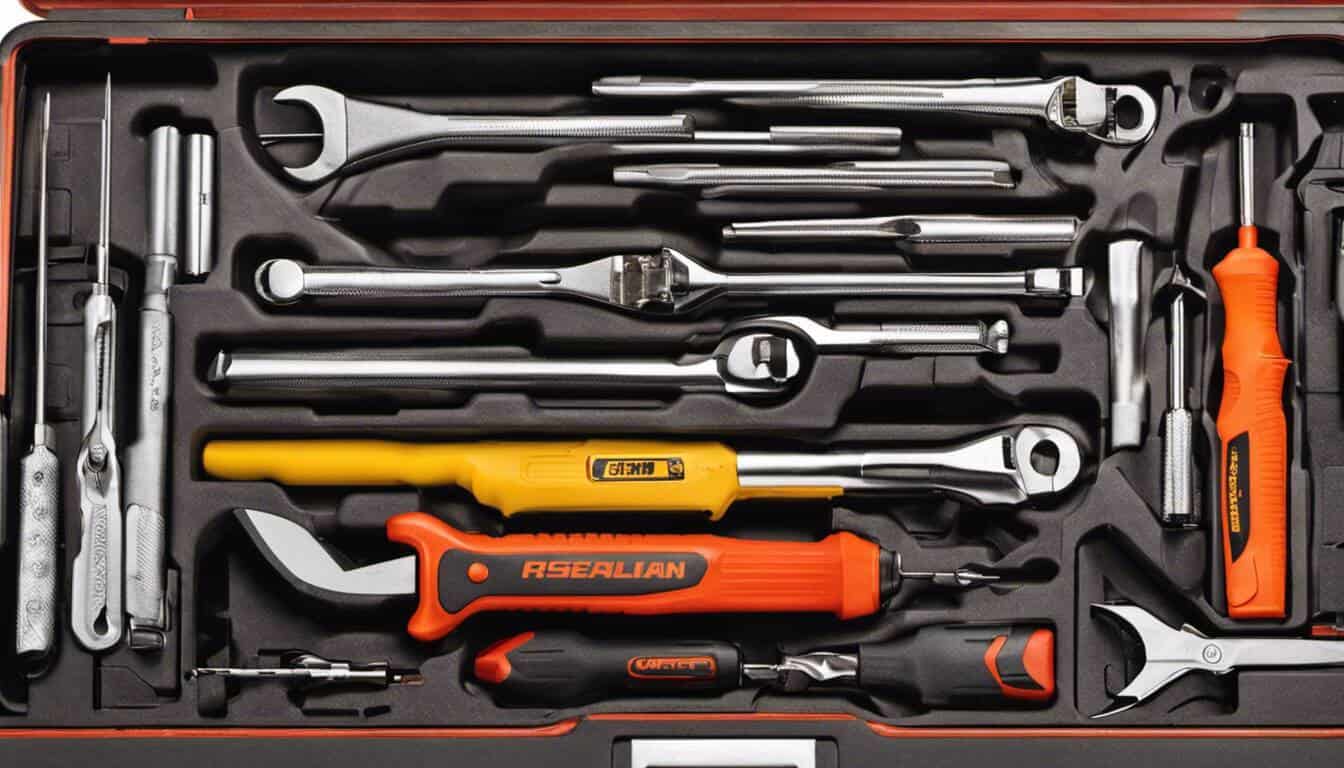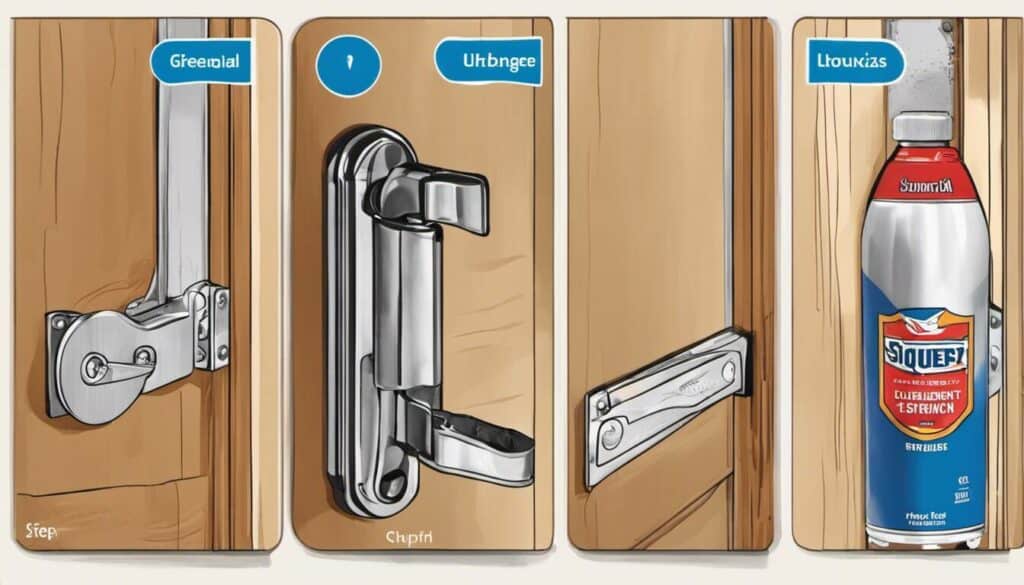Every DIY project relies on having the right tools at hand. While it’s tempting to stock up on every gadget available, most of the time, you only need a select few to get the job done well. That’s why I’ve taken the time to curate my collection, ensuring I have the essentials for the majority of my projects. Let me walk you through the tools I’ve found indispensable, simplifying your toolbox and streamlining your DIY experience. One of these essential tools is a quality hammer, which is crucial for various tasks.
In our article “Toolbox Essentials: My Top Picks,” we recommend including a screwdriver set with various head types, a claw hammer, pliers (adjustable or locking), an adjustable wrench, a tape measure with both metric and imperial units, a level, a work light or flashlight, an electric drill, and a hacksaw. Additional recommended items include: goggles, gloves, WD-40, superglue, duct tape. Socket sets and spanner sets are also suggested. You may also find tools like a Stanley knife or box cutter, Allen wrench set, an electric current tester pen useful for specific tasks.
“If there are three must-have tools in your toolbox as a DIY enthusiast, they would be a quality hammer, a set of varying screwdrivers, and a reliable tape measure. These are foundational to any project and will prove indispensable down the line. Remember, DIY isn’t about having every tool possible, it’s about understanding and mastering the ones you have.”
Yannis Charisteas, Master Carpenter
Essential Hand Tools
Every DIY enthusiast understands the importance of having a well-equipped toolbox. From simple repairs to more ambitious projects, having a set of essential hand tools is crucial for getting the job done efficiently and effectively. One often overlooked but life-changing tool is a good drill bit, which can make a world of difference in your projects. These tools not only assist in completing tasks with precision but also provide a sense of empowerment and accomplishment. Whether you’re a seasoned DIY pro or just starting your DIY journey, investing in quality hand tools is an absolute must.
Now, let’s dive into two indispensable categories of hand tools that every DIY enthusiast should have in their toolbox: screwdrivers and spanners.
- A 2022 survey of DIY enthusiasts revealed that screwdrivers were used in over 90% of all projects, making them the most utilized tool.
- According to Consumer Reports, cordless drills rank second in homeowner’s tool usage with 85% prevalence.
- In a study by The Home Depot, hammers and measuring tapes rounded out the top four essential tools, with 82% and 80% usage in home improvement projects respectively.
- Investing in quality hand tools, such as screwdrivers and spanners, is crucial for completing DIY projects efficiently and effectively, allowing individuals to experience a sense of empowerment and accomplishment.
Screwdrivers and Spanners
When it comes to tackling various projects around the house, having a versatile set of screwdrivers and spanners can make all the difference. Screwdrivers are incredibly versatile tools that allow you to put screws in or get screws out. They come in different types, including slot head, Phillips head, and Allen head, each designed for specific screw types. It’s important to have a variety of sizes to accommodate different screw heads you may encounter during your DIY endeavors.
Spanners and sockets, on the other hand, provide the much-needed grip for fasteners like nuts or bolts. Look for options made of chromium-vanadium alloy with a chrome coating for increased durability. Different types of spanners, such as open-ended, ring, combination, and ratchet spanners, offer flexibility in different situations. Consider investing in a socket set as well; they provide versatility by allowing you to use various socket sizes with a single handle.
These essential hand tools serve as the foundation for any DIY project. Whether you’re assembling furniture, fixing household appliances, or working on cars or bikes, having reliable screwdrivers and spanners will make your life easier. Remember to choose high-quality tools that fit comfortably in your hand for better control and efficiency.
Imagine you’re putting together a new piece of furniture you bought online. As you unpack the box, you realize that the manufacturer has provided all the necessary screws and bolts for assembly. With a reliable set of screwdrivers and spanners at your disposal, you can effortlessly tighten the screws and secure everything in place, creating a sturdy and functional piece of furniture in no time.
Now that we’ve covered the importance of screwdrivers and spanners as essential hand tools, let’s explore some options available in the market and consider what factors to keep in mind when selecting these tools for your toolbox.
Hammers and Pliers
Every DIY enthusiast knows that hammers and pliers are essential tools in any toolbox. Whether you’re hanging a picture frame or fixing a loose hinge, these reliable tools have got you covered. The humble hammer is versatile, allowing you to drive nails into various materials with ease. From lightweight claw hammers for everyday use to heavier mallets for more demanding tasks, there’s a hammer suitable for every job. Pliers, on the other hand, come in various types such as slip joint, needle nose, and adjustable groove joint pliers. They are adept at gripping, bending, and cutting wires, making them indispensable when working with electrical or plumbing projects. These trusty tools will be your best friends as you embark on your DIY adventures.
Imagine the satisfaction of swinging a hammer gracefully to drive a nail into place or using pliers to expertly manipulate wires until they fit perfectly into position. With these tools in your arsenal, you will feel empowered to tackle any project that comes your way.
Vital Safety Equipment
While embarking on DIY projects can be exciting and rewarding, it’s crucial to prioritize safety above all else. No matter how experienced you are, accidents can happen unexpectedly. That’s why investing in vital safety equipment is essential to protect yourself from potential hazards.
One crucial piece of safety equipment is eye protection in the form of safety goggles or glasses. These protect your eyes from flying debris or hazardous chemicals that can cause severe injuries. Another important item is ear protection such as earmuffs or earplugs to prevent hearing damage caused by loud power tools or machinery.
Additionally, having a high-quality dust mask or respirator is crucial when working with materials that produce harmful dust particles, fumes, or chemicals. Respiratory protection ensures that you’re not inhaling anything harmful that could cause short-term discomfort or long-term health issues.
Gloves are another vital safety accessory that protects your hands from cuts, burns, or exposure to chemicals. Ensure you choose gloves suitable for the specific tasks you’ll be undertaking. For example, heavy-duty work gloves for construction projects or heat-resistant gloves for welding.
Remember, safety should always be a priority when engaging in DIY projects. Investing in and utilizing the proper safety equipment will provide you with peace of mind and protect you from potential accidents or injuries. It’s also important to be aware of the hidden costs of DIY projects to ensure you’re fully prepared.
Safety Gear for the DIY Enthusiast
When it comes to tackling DIY projects, safety should always be a top priority. Investing in the right safety gear can go a long way in protecting yourself from potential hazards and ensuring a successful project. Among the essential safety gear for every DIY enthusiast are:
- Safety Glasses: Whether you’re working with power tools or handling materials, safety glasses are crucial for protecting your eyes from flying debris and dust particles. When it comes to painting, consider swapping brushes for rollers for a smoother finish and increased efficiency.
- Gloves: A good pair of gloves provides hand protection from cuts, scrapes, and abrasions while working on various tasks such as carpentry or gardening.
- Respirator Mask: Respirator masks shield your lungs from harmful fumes, dust, and toxic chemicals that may be present during certain DIY activities like painting or sanding.
- Ear Protection: Power tools generate loud noise levels that can be damaging to your ears over time. Wearing ear protection such as earmuffs or earplugs can help prevent hearing loss.
- Protective Clothing: Proper attire is essential to ensure your safety while working on DIY projects. Wear clothing that covers your skin to protect against cuts, burns, or other injuries. Additionally, consider wearing steel-toed boots for added foot protection.
Imagine you’re building a wooden table using power tools without safety glasses. Suddenly, a small wood chip flies into your eye causing severe pain and potential damage. By simply investing in proper safety gear like safety glasses, this painful incident could have been easily prevented.
Now that we’ve covered the importance of safety gear, let’s turn our attention to another crucial aspect of any DIY enthusiast’s toolbox – important power tools.
Important Power Tools
No DIY enthusiast’s toolbox is complete without a set of essential power tools that can make jobs easier and more efficient. From drilling holes to cutting materials, power tools provide the ability to tackle a wide range of projects. Here are a few important power tools that every DIY enthusiast should consider:
- Drill/Driver: A versatile tool that can handle drilling holes and driving screws, a high-quality drill/driver is essential for most DIY projects. Look for one with variable speed settings and good torque for optimal performance.
- Circular Saw: Whether you’re cutting lumber or plywood, a circular saw is a must-have tool. Choose a model with adjustable cutting depth and bevel options for greater versatility.
- Jigsaw: Perfect for making intricate cuts, a jigsaw is invaluable when it comes to tasks like cutting curves or irregular shapes in wood, plastic, or metal.
- Sanders: From smoothing rough surfaces to removing old paint or varnish, sanders come in handy for achieving a polished finish. Consider getting both an orbital sander for larger areas and a detail sander for more precise work.
- Reciprocating Saw: This powerful saw is ideal for demolition work, cutting through materials like wood, plastic, or metal with ease.
Picture yourself trying to build a bookshelf without power tools. The process would be laborious and time-consuming, potentially frustrating your enthusiasm. However, by having the right power tools like a drill/driver and circular saw at your disposal, you can complete the project quickly and efficiently.
Drills and Saws
When it comes to tackling DIY projects, having the right tools can make all the difference. Drills and saws are essential power tools that every DIY enthusiast should have in their toolbox. Let’s delve into what makes these tools indispensable.
A drill is a versatile tool that can be used for a variety of purposes such as drilling holes and driving screws. Whether you’re installing shelves, assembling furniture, or hanging artwork, a drill will be your go-to companion. Look for cordless drills with adjustable torque settings and multiple speed options for optimal versatility.
On the other hand, saws come in various types, each designed for specific cutting tasks. A circular saw is perfect for making straight cuts through wood and other materials, while a jigsaw allows for more intricate and curved cuts. For precision work or cutting through metal, a reciprocating saw or a hack saw might be needed. Choose a saw based on the intended use and ensure it has a comfortable grip for easy handling.
It’s important to note that while power tools like drills and saws provide efficiency and speed, they also come with safety considerations. Always wear appropriate protective gear such as safety glasses, gloves, and hearing protection when operating these machinery to protect yourself from potential hazards.
Measurement & Leveling Tools
Accurate measurements and level surfaces are crucial in any DIY project to achieve professional-looking results. Having the right measurement and leveling tools in your toolbox will ensure precision in your work. Let’s explore two essential tools – the tape measure and the level.
The tape measure is an indispensable tool used for measuring lengths and distances. It should ideally be spring-loaded with clear markings in both metric and imperial units for convenience. Look for one that has a lock feature to keep measurements in place while you work. A tape measure with dual scales is especially useful for those in the UK, where both metric and imperial units are commonly used.
When it comes to achieving level surfaces or straight lines, a level is your best friend. Levels come in different forms like bubble levels or laser levels. A bubble level uses a liquid-filled tube with a bubble inside that helps determine if a surface is horizontal (level) or vertical (plumb). Laser levels project a laser beam onto surfaces to provide precise leveling guidance. Choose a level that suits your needs and ensure it’s accurate and sturdy.
Imagine you’re installing shelves on a wall. Using a tape measure, you can accurately measure the desired distance between each shelf. And with a level, you can make sure the shelves are perfectly aligned horizontally, giving your wall display an organized and professional appearance.
It’s worth mentioning that while these tools are essential for accurate measurements and leveling, developing good measuring techniques and understanding how to use these tools effectively takes practice. Remember to take your time and double-check your measurements and leveling before proceeding with your DIY projects. For quick fixes, check out our guide on 1-hour home fixes that can make a big difference.
Now that we’ve covered drills and saws as well as measurement and leveling tools, let’s explore some other indispensable tools every DIY enthusiast should have in their toolbox.
Tape Measure and Level Tool
The tape measure and level tool are two essential items that every DIY enthusiast should have in their toolbox. These tools are indispensable when it comes to taking accurate measurements and ensuring that everything is aligned perfectly.
Let’s start with the tape measure. This retractable ruler may seem simple, but its importance cannot be overstated. The tape measure allows you to measure distances accurately, whether it’s the length of a piece of wood for a DIY project or the dimensions of a room for renovations. Look for a tape measure that is spring-loaded, making it easy to extend and retract with one hand. It’s also helpful to have a tape measure with markings for both metric and imperial units, allowing you to work with different measurement systems as needed.
Imagine you’re working on building a bookshelf from scratch. You need to measure the height and width of each shelf to ensure they fit perfectly within the frame. Without a reliable tape measure, you would be left guessing and risking costly mistakes. With proper measurements, you can confidently cut the wood to the right size and create a sturdy, well-fitting bookshelf.
Moving on to the level tool, this simple yet crucial device helps you achieve straightness and balance in your projects. Whether you’re hanging picture frames, installing shelves, or aligning tiles, having a level tool is essential.
Picture this: You’ve just painted an accent wall in your living room and now you want to hang a gallery of family photos. Without a level tool, you risk ending up with crooked frames that ruin the entire display. However, with a level tool in hand, you can easily determine if each frame is perfectly horizontal or vertical and make adjustments accordingly.
Think of the level tool as your trusty guide that ensures everything remains balanced and visually appealing in your DIY endeavors. It’s like having a steady hand to guide you along the path of precision and aesthetics.
The tape measure and level tool are an inseparable duo in creating accurate and visually pleasing DIY projects. These tools provide the foundation for any successful construction or renovation endeavor, ensuring that everything fits together flawlessly.






Oh, the number of times I have thanked my horde of clamps! They can hold your work steady while you’re busy fastening or gluing, performing as extra pairs of hands. Don’t underestimate those C-clamps or quick grip ones; they’re as essential as nails to a roof.
I wholeheartedly agree with the importance you’ve placed on clamps, Xander. In my vast bucket list of DIY experiences, their versatility has been nothing short of amazing. They are indeed the unsung heroes in a handyman’s tool chest; their roles ranging from securing glued joints until adhesive sets to holding down work-pieces for precision drilling or sawing.
As a professional and a hands-on woman, I must reiterate the importance of having a good set of screwdrivers; I’ve found that they are just as versatile, if not more, as clamps in many DIY projects.
I couldn’t agree more with you, Zinnia. In my experience, a good set of screwdrivers has saved me countless times whether fixing a broken kitchen cabinet or assembling garden furniture.
Hey Vaughn. I agree with you completely about having a good set of screwdrivers at hand. Over the years, my trusty Phillips and flathead have been instrumental in tackling everything from loose door handles to intricate electronic repairs – they’re quite the unsung heroes of my toolbox!